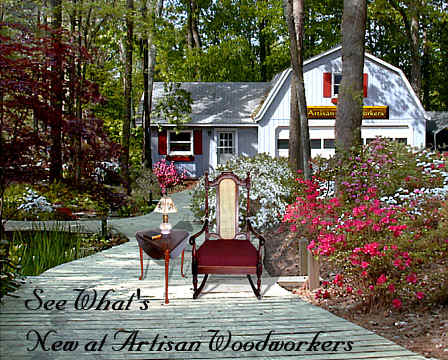

Glossary of Terms,
Antique Furniture
P
Pad Foot: A foot found on Queen Anne furniture, having a disk resembling a pad under the foot proper.
Palmette: Conventional presentation of a palm leaf in ornament.
Parquetry: Wood veneering inlaid in geometric patterns, in which respect it differs from marquetry, which is more pictorial in design.
Patina: Color and texture of the surface produced by age and wear. In wood furniture the varnish, shellac, or oil has a tendency to deepen ,yet retains transparency; edges wear smooth and sharp outlines are softened.
Pedestal: A tall, narrow, floor-standing column designed to hold art objects.
Pediment: The triangle-shaped top of a classic building. It is a motif adapted for the tops of important cabinets and secretaries. The bonnet top is also spoken of as a pediment, it being a variant of this type of superstructure.
Peg: A wooden nail used to hold furniture parts together; sometimes exposed to create decorative interest in Early American pieces.
Pembroke Table: Small rectangular drop-leaf with drawer, the leaves supported by brackets in the frame. Earliest recorded, made by Chippendale about 1771; named after the Earl of Pembroke.
Pendant: A hanging ornament.
Pennsylvania: Corrupted form of "Deutsch" or German; Rural style furniture made by German, Swiss, and some Swedish peasants in eastern Pennsylvania, 1680-1850. Turnings, gouge carving, and brightly painted motifs.
Pickled Finishes: Cloudy white patina over light wood, originally produced by the removal with vinegar of the plaster base of the painted wood.
Pie crust Table: Small table, usually round with edge carved or molded in scallops outline. Pier Glass : A tall narrow mirror, hung between two windows or in a narrow space, usually over a table of console type.
